Pillars of Eternity II: Deadfire is the enormous sequel to one of the most popular RPGs in the last decade. Taking the Infinity Engine-style role-playing experience to new heights, the original Pillars of Eternity took a lot of very interesting (and welcome) liberties with the genre Planescape: Torment and Baldur’s Gate made famous. Deadfire takes Pillars further in an even more dynamic direction than the first game in the series, and is absolutely worth jumping into even if you haven’t played the original. But if you played the first rigorously, you may be curious about some of the most significant changes in the sequel. Here’s what you need to know.
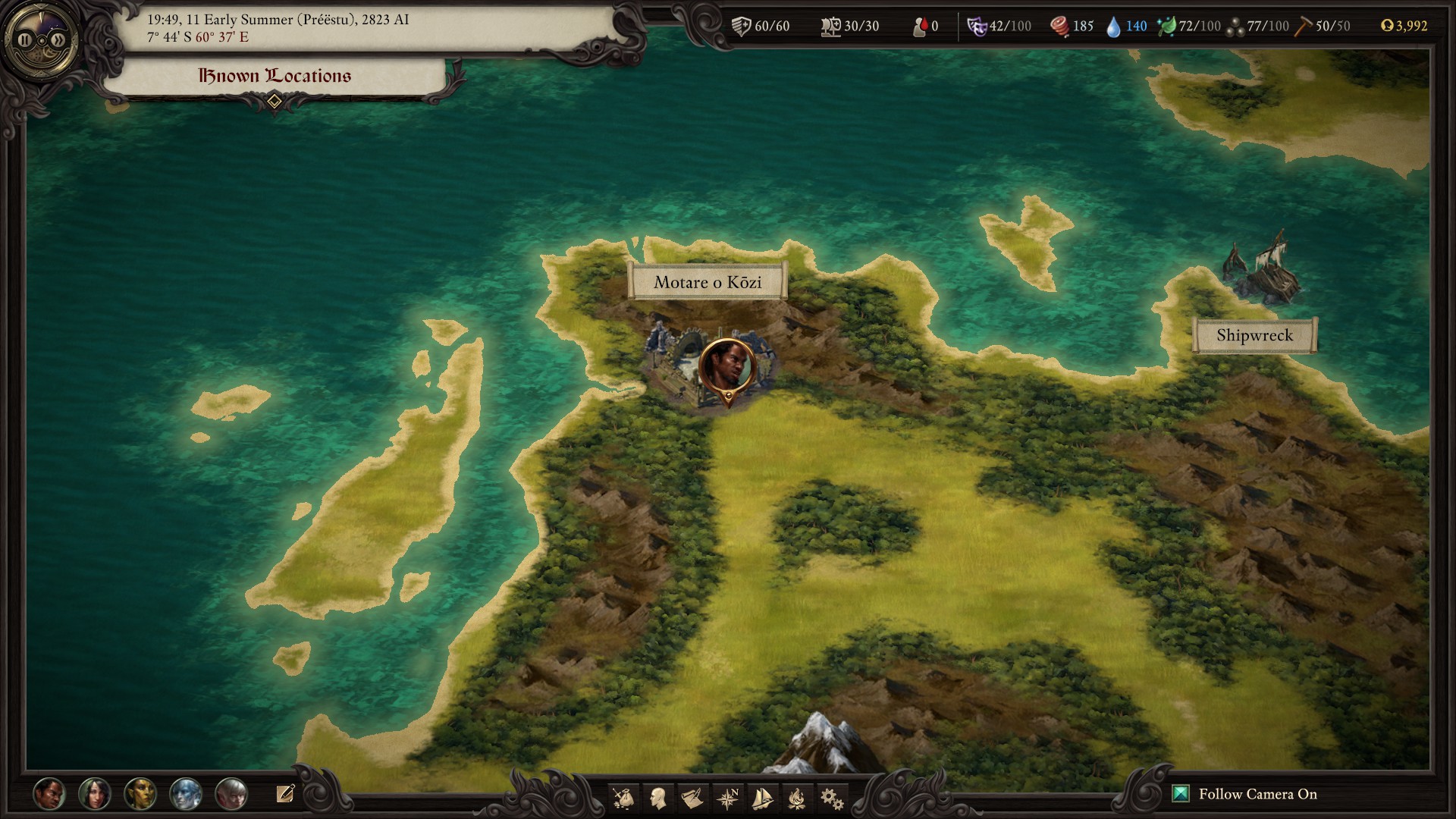
Setting
Maybe the biggest difference between the games is the world in which you’ll spend the most time in. Where the original world of Pillars of Eternity focused around the large landmass that was shared by neighboring regions like Dyrwood and Twin Elms, Pillars 2 is characterized by the groups of island chains call the Deadfire Archipelago. And it’s not just that location is different, but the overall feel is too. Where Pillars of Eternity felt like an interesting twist on your standard sword and sorcery fantasy, Deadfire is very much a game rooted in piracy. It feels way more like a Pirates of the Caribbean movie, with all of its gunpowder and general high seas skulduggery, but through the lens of your Tolkienese high fantasy. It’s better for it, frankly.
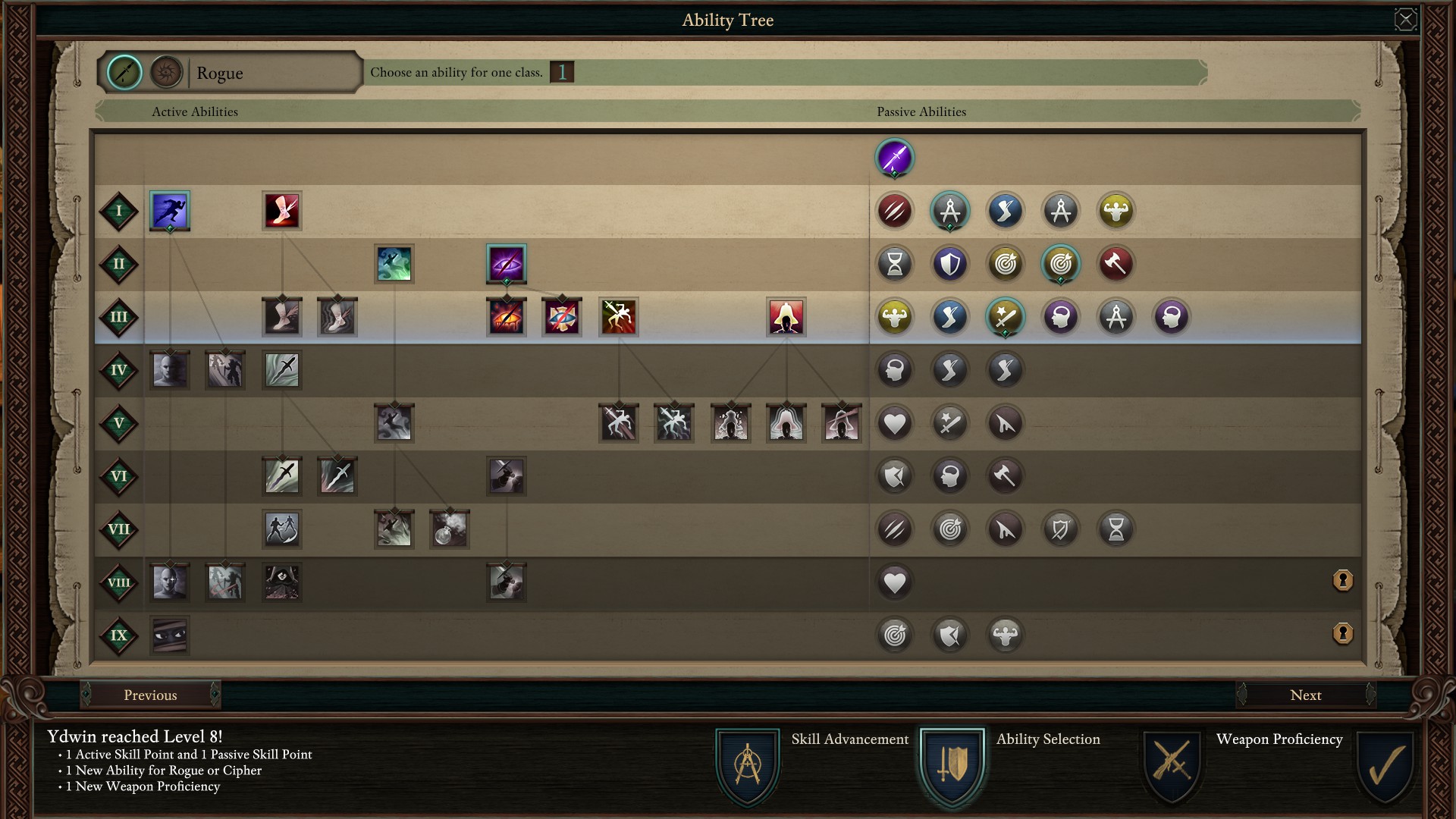
Multi-classing
No longer do you or your party members have to be stuck with a single class, meaning a single tree with just a limited set of tools and roles to play. Now, you can chose new multi-classes, that are a mixture of a pair of classes who’s trees can work in tandem to create whole new styles of team fighting. If a Fighter sounds too plain jane, and a Rogue sounds too specialized, mix them together and create a Swashbuckler, who has the front line combat acumen of a Fighter with the tricks and maneuvers of a Rogue. Careful though — these new classes offer more options for veteran players but can be tough to wrangle for new players.
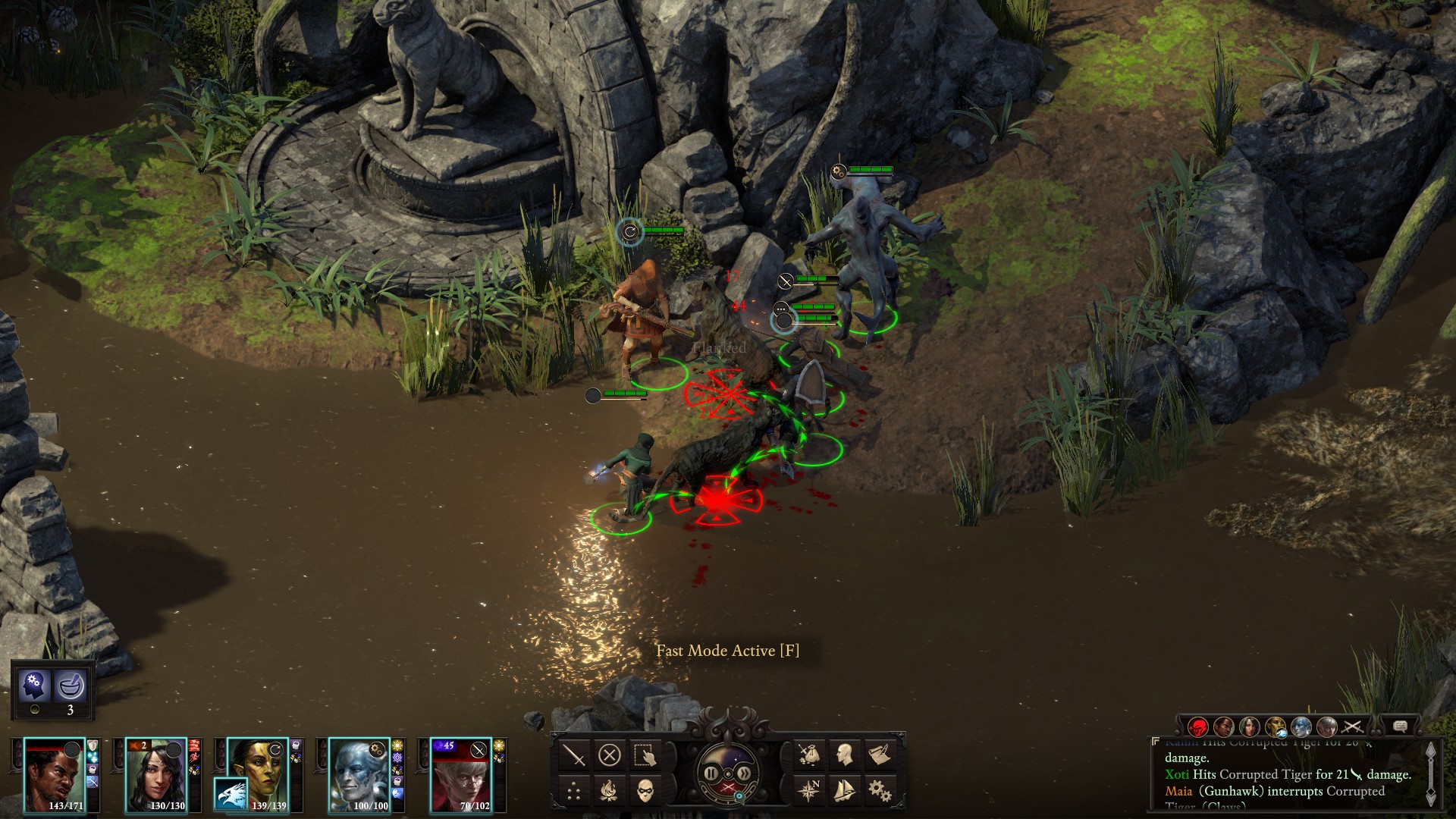
Combat
There have been several changes to combat, big and small. Firstly, the party size has been reduced to five from six, with an extra space reserved for hunter pets and guest characters. Hersey to some old school Baldur’s Gate stalwarts, but this makes combat far easier to process. Battles are slower paced, which can take some getting used to. What’s happening moment to moment is much clearer, thanks to extra efforts to highlight all of the tabletop RPG-style mechanics happening at once. There’s also just some quality of life improvements, like how status effects are displayed (and that there are way less of them to get bogged down by). There are also far less enemy encounters on hostile maps than the original game. There are also many more ways to talk yourself out of fights in Deadfire.
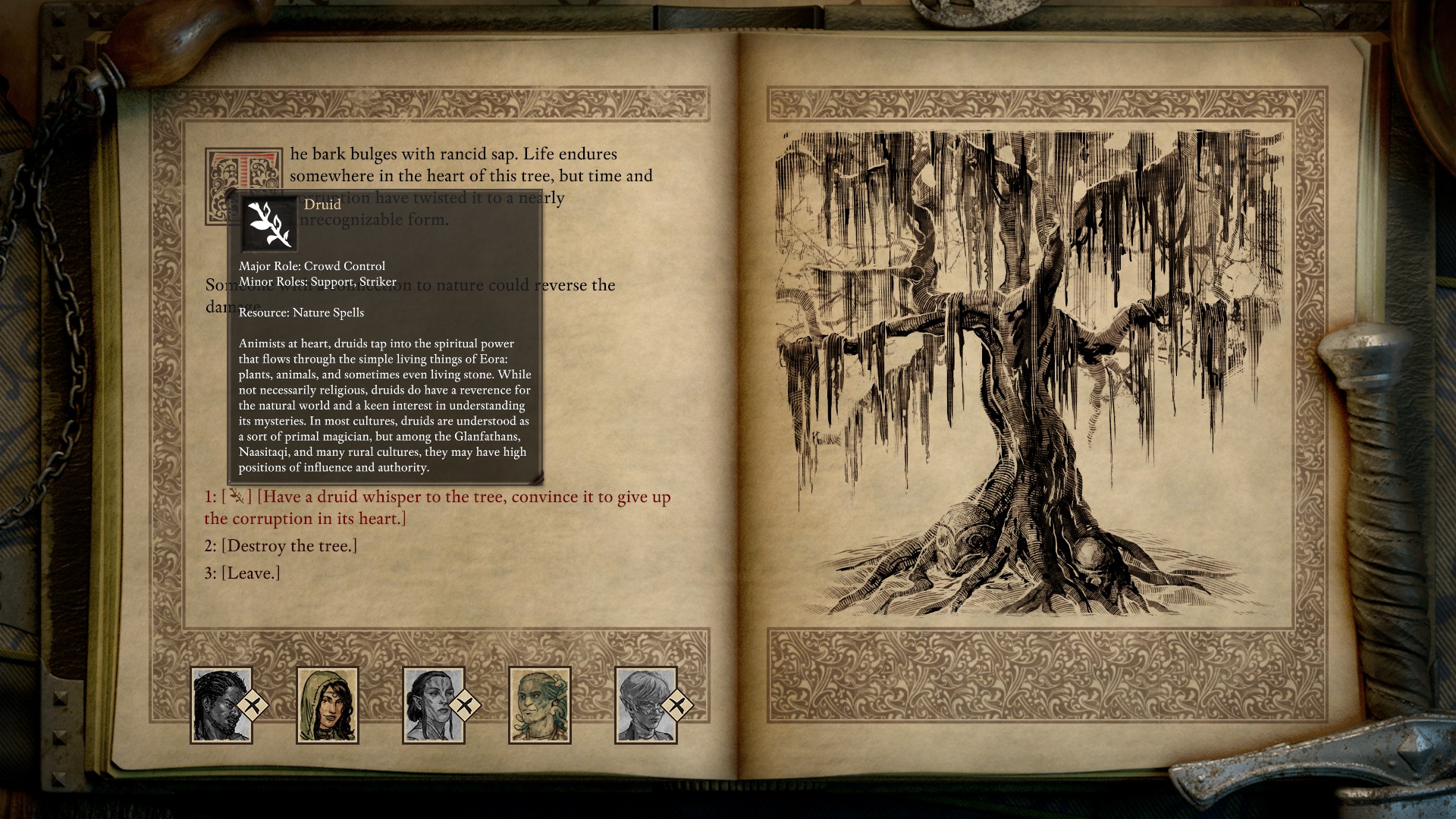
Party Dynamics
Ever member of your team in Deadfire has their own wants, needs, and ambitions aside from helping you get answers. Individual party members react uniquely both to things you do, but also things other members of the party do around them, the time of day, the kinds of places you’re in, etc. There are lots of tags that certain behaviors get (Dutiful, Piety, Irresponsible, etc.) that all coalesce to determine how individuals feel about what’s going on in the world around them.
You’ll get more chances to flex your party member’s individual skills in Deadfire. Encounters that involve skill checks like Religion or Intimidate can be made by individual members of the party instead of just your character, meaning you can get get party members better suited for certain tasks to down them for you. It also makes specializing different members for different tasks that much more important;
Many characters from the original game will cross over into the sequel, so if you had some favorites like Eder, expect to see them again. More importantly, if he died in the last game, he stays dead here.
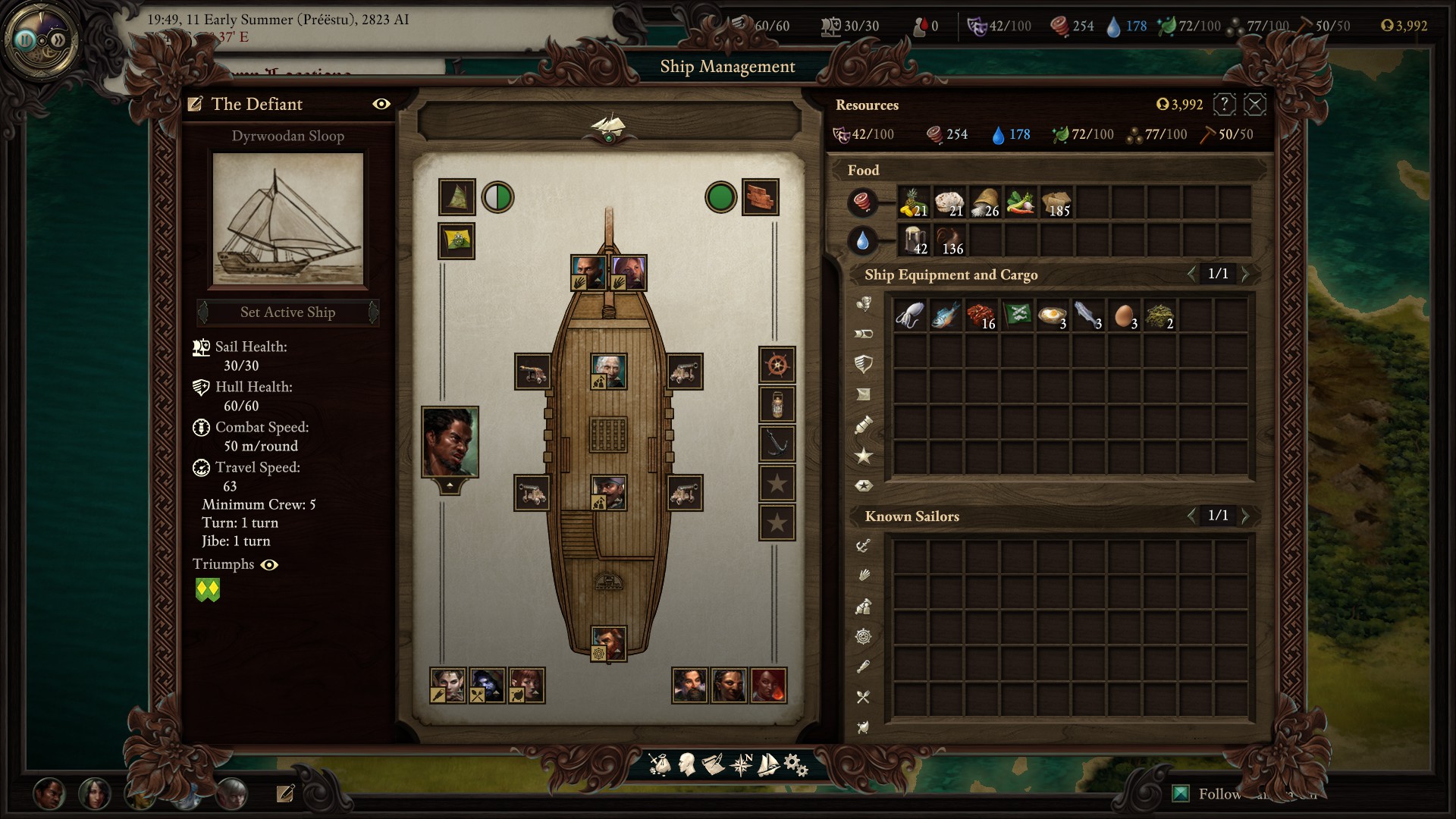
Ship Management
Replacing the castle management system is a ship management one. You’ll be tasked with hiring crew to fill important roles, keeping them happy, and keeping them fed. There’s also the matter of the ship itself, which you can upgrade as a whole by buying new ships, as well as keeping things like sails, hulls, and weaponry in tip top shape.
Which you’ll have to do, because the seas are full of people looking to crack open your boat and steal all the goodies inside. Ship combat is nothing like normal combat, played mostly in a revolving set of encounter screens that determine how close you are, which side is facing the enemy, and how much shooting you’re doing. The option to ram the enemy and board the ship is of course always there.
There are many more nuanced adjustments that are different in Deadfire than in the original, but those are a bit easier to ease into. If you need help on your journey into the archipelago, come to the Official Pillars of Eternity II: Deadfire Wiki!
